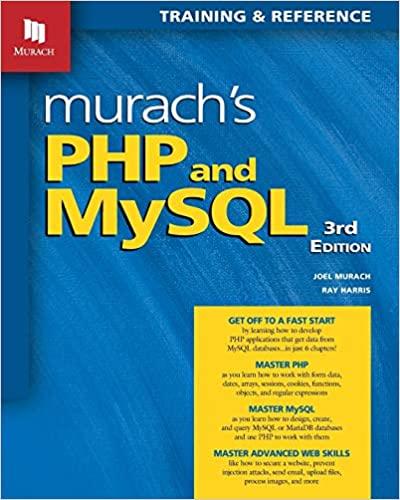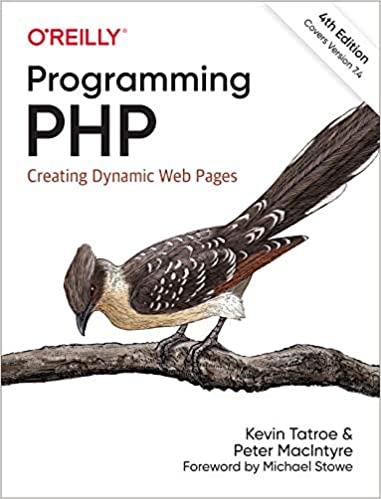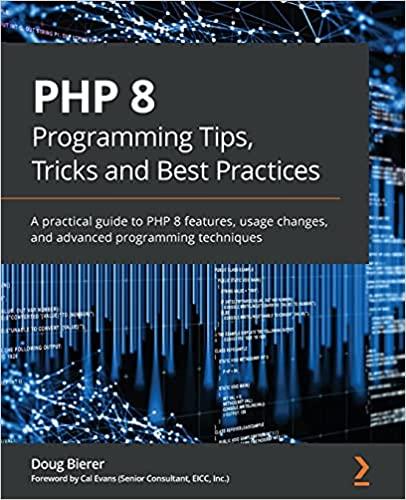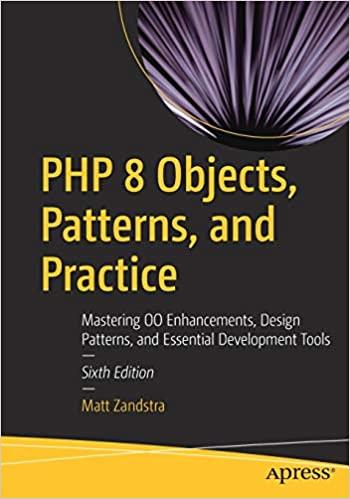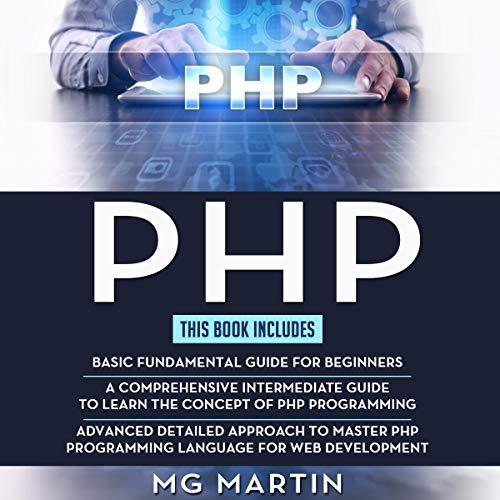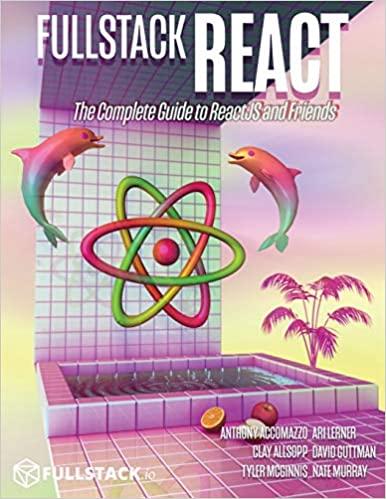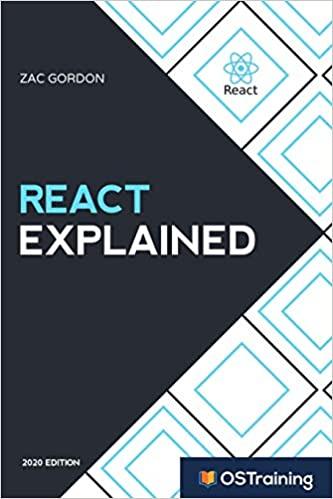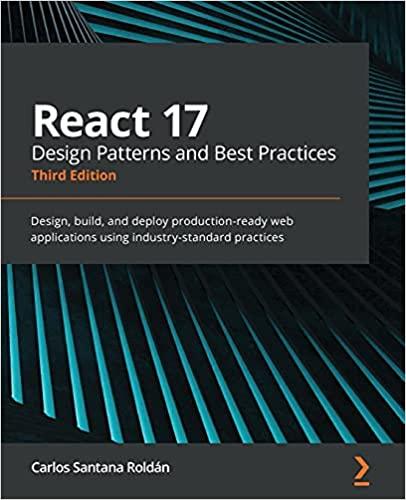Murach’s PHP and MySQL (3rd Edition)
“I can’t count how many PHP books I have purchased over the years trying to learn the language. Murach’s was the first book that helped me grasp the concepts and got me onto actually scripting in PHP.”
That’s what one developer posted on the first edition of Murach’s PHP and MySQL. Now, this 3rd Edition does a better-than-ever job of delivering the skills you need to develop database-driven websites using PHP and MySQL, the way today’s top web professionals do.
Section 1 is a quick-start course that shows how to use the latest versions of PHP, MySQL (or MariaDB), and the Apache web server to build your first PHP applications. Right from the start, you’ll learn to create applications that conform to the MVC pattern, so they’ll be easier to maintain as they grow. In addition, you’ll learn how to create applications that prevent SQL injection attacks and guard against XSS attacks.
Section 2 takes you deeper into PHP by covering the skills you’ll use every day, like how to work with form data, dates, arrays, sessions, cookies, functions, objects, regular expressions, and exceptions. Likewise, Section 3 dives into MySQL, teaching you how to design and create a database, as well as how to access and maintain database data from your PHP programs. Finally, Section 4 teaches you important web programming skills like how to secure web pages, send email, upload files, and process images.
Along the way, you’ll find out how to take advantage of PHP 7 enhancements like scalar data type declarations and improved error handling, as well as new operators and functions.
Complete sample applications and chapter exercises provide training support throughout. A great choice for any developer who wants to master PHP without a lot of frustration and unnecessary expense.
Programming PHP: Creating Dynamic Web Pages
Why is PHP the most widely used programming language on the web? This updated edition teaches everything you need to know to create effective web applications using the latest features in PHP 7.4. You’ll start with the big picture and then dive into language syntax, programming techniques, and other details, using examples that illustrate both correct usage and common idioms.
If you have a working knowledge of HTML, authors Kevin Tatroe and Peter MacIntyre provide many style tips and practical programming advice in a clear and concise manner to help you become a top-notch PHP programmer.
Understand what’s possible when you use PHP programs
Learn language fundamentals, including data types, variables, operators, and flow control statements
Explore functions, strings, arrays, and objects
Apply common web application techniques, such as form processing, data validation, session tracking, and cookies
Interact with relational databases like MySQL or NoSQL databases such as MongoDB
Generate dynamic images, create PDF files, and parse XML files
Learn secure scripts, error handling, performance tuning, and other advanced topics
Get a quick reference to PHP core functions and standard extensions
PHP 8 Programming Tips, Tricks and Best Practices: A practical guide to PHP 8 features, usage changes, and advanced programming techniques
Discover effective techniques, workarounds, and expert guidance for avoiding situations where your application might break following PHP 8 migration
Key Features
Get the hang of all the new features introduced in PHP 8
Learn how to detect potential code breaks and keep your application code running smoothly in PHP 8
Explore an exciting new trend – asynchronous PHP programming using Swoole and Fibers
Book Description
Thanks to its ease of use, PHP is a highly popular programming language used on over 78% of all web servers connected to the Internet. PHP 8 Programming Tips, Tricks, and Best Practices will help you to get up-to-speed with PHP 8 quickly. The book is intended for any PHP developer who wants to become familiar with the cool new features available in PHP 8, and covers areas where developers might experience backward compatibility issues with their existing code after a PHP 8 update. The book thoroughly explores best practices, and highlights ways in which PHP 8 enforces these practices in a much more rigorous fashion than its earlier versions.
You’ll start by exploring new PHP 8 features in the area of object-oriented programming (OOP), followed by enhancements at the procedural level. You’ll then learn about potential backward compatible breaks and discover best practices for improving performance. The last chapter of the book gives you insights into PHP async, a revolutionary new way of programming, by providing detailed coverage and examples of asynchronous programming using the Swoole extension and Fibers.
By the end of this PHP book, you’ll not only have mastered the new features, but you’ll also know exactly what to watch out for when migrating older PHP applications to PHP 8.
What you will learn
Gain a comprehensive understanding of the new PHP 8 object-oriented features
Discover new PHP 8 procedural programming enhancements
Understand improvements in error handling in PHP 8
Identify potential backward compatibility issues
Avoid traps due to changes in PHP extensions
Find out which features have been deprecated and/or removed in PHP 8
Become well-versed with programming best practices enforced by PHP 8
Who this book is for
This book is for PHP developers at all levels who have experience in PHP 5 or above. If you’re just getting started with PHP, you’ll find the code examples useful for learning the language. Developers who have worked for a few months on one or more PHP projects will be able to apply the tips and techniques to the code at hand, while those with many years of PHP experience are sure to appreciate the concise coverage of new PHP 8 features.
Table of Contents
Introducing New PHP 8 OOP Features
Learning about PHP 8’s Functional Additions
Taking Advantage of Error-Handling Enhancements
Making Direct C-Language Calls
Discovering Potential OOP Backward-Compatibility Breaks
Understanding PHP 8 Functional Differences
Avoiding Traps When Using PHP 8 Extensions
Learning about PHP 8’s Deprecated or Removed Functionality
Mastering PHP 8 Best Practices
Improving Performance
Migrating Existing PHP Apps to PHP 8
Creating PHP 8 Applications Using Asynchronous Programming
Learning PHP, MySQL & JavaScript: With jQuery, CSS & HTML5 (Learning PHP, MYSQL, Javascript, CSS & HTML5)
Build interactive, data driven websites with the potent combination of open source technologies and web standards, even if you have only basic HTML knowledge. In this update to this popular hands on guide, you’ll tackle dynamic web programming with the latest versions of today’s core technologies: PHP, MySQL, JavaScript, CSS, HTML5, and key jQuery libraries.
Web designers will learn how to use these technologies together and pick up valuable web programming practices along the way—including how to optimize websites for mobile devices. At the end of the book, you’ll put everything together to build a fully functional social networking site suitable for both desktop and mobile browsers.
Explore MySQL, from database structure to complex queries
Use the MySQLi extension, PHP’s improved MySQL interface
Create dynamic PHP web pages that tailor themselves to the user
Manage cookies and sessions and maintain a high level of security
Enhance the JavaScript language with jQuery and jQuery mobile libraries
Use Ajax calls for background browser server communication
Style your web pages by acquiring CSS2 and CSS3 skills
Implement HTML5 features, including geolocation, audio, video, and the canvas element
Reformat your websites into mobile web apps
PHP 8 Objects, Patterns, and Practice: Mastering OO Enhancements, Design Patterns, and Essential Development Tools
Learn how to develop elegant and rock-solid systems using PHP, aided by three key elements: object fundamentals, design principles, and best practices. The 6th edition of this popular book has been fully updated for PHP 8, including attributes, constructor property promotion, new argument and return pseudo-types, and more. It also covers many features new since the last edition including typed properties, the null coalescing operator, and void return types. This book provides a solid grounding in PHP’s support for objects, it builds on this foundation to instill core principles of software design and then covers the tools and practices needed to develop, test, and deploy robust code.
PHP 8 Objects, Patterns, and Practice begins by covering PHP’s object-oriented features. It introduces key topics including class declarations, inheritance, and reflection. The next section is devoted to design patterns. It explains the principles that make patterns powerful. You’ll cover many of the classic design patterns including enterprise and database patterns. The last segment of the book covers the tools and practices that can help turn great code into a successful project. The section shows how to manage multiple developers and releases with git, and how to manage builds and dependencies with Composer. It also explores strategies for automated testing and continuous integration.
After reading and using this book, you will have mastered object-oriented enhancements, design patterns, and the essential development tools available for PHP 8.
What You Will Learn
Work with object fundamentals: write classes and methods, instantiate objects, and create powerful class hierarchies using inheritance
Master advanced object-oriented features, including static methods and properties, managing error conditions with exceptions, and creating abstract classes and interfaces
Understand and use design principles to deploy objects and classes effectively in your projects
Discover a set of powerful patterns that you can implement in your own projects
Guarantee a successful project including unit testing; version control and build, installation, and package management; and continuous integration
Who This Book Is For
Anyone with at least a basic knowledge of PHP who wants to use its object-oriented features in their projects. It is also for PHP coders who want to learn about the practices and tools (version control, testing, continuous integration, etc) that can make projects safe, elegant and stable.
Learning PHP, MySQL & JavaScript: A Step-by-Step Guide to Creating Dynamic Websites
Build interactive, data-driven websites with the potent combination of open source technologies and web standards, even if you have only basic HTML knowledge. With the latest edition of this popular hands-on guide, you’ll tackle dynamic web programming using the most recent versions of today’s core technologies: PHP, MySQL, JavaScript, CSS, HTML5, jQuery, and the powerful React library.
Web designers will learn how to use these technologies together while picking up valuable web programming practices along the way–including how to optimize websites for mobile devices. You’ll put everything together to build a fully functional social networking site suitable for both desktop and mobile browsers.
Explore MySQL from database structure to complex queries
Use the MySQL PDO extension, PHP’s improved MySQL interface
Create dynamic PHP web pages that tailor themselves to the user
Manage cookies and sessions and maintain a high level of security
Enhance JavaScript with the React library
Use Ajax calls for background browser-server communication
Style your web pages by acquiring CSS skills
Implement HTML5 features, including geolocation, audio, video, and the canvas element
Reformat your websites into mobile web apps
PHP: The Complete Guide for Beginners, Intermediate, and Advanced Detailed Approach to Master PHP Programming
Discover the power of PHP as you take your web development skills to the next level.
PHP is the most common programming language for server-side web development.
One of the best things about this language is that it is fairly easy to learn.
This book will cover all from beginners, intermediate, and advanced strategies to enhance your PHP skills.
Inside you will find and discover all you need:
PHP: Basic Fundamental Guide for Beginners
How you can set up your PHP environment to create your first PHP program
How you can easily input PHP values for web users
Learn more about operators, expressions, arrays, and the variables in PHP
Discover the power of conditional statements
Discover how to insert, delete, and update data in a database
Learn how to secure your passwords in PHP
How to build a complete member registration system
PHP: A Comprehensive Intermediate Guide to Learn the Concept of PHP Programming
How to use restful APIs in PHP
Create PHP graphics
How to read, write, append, and delete files in PHP
How you can prevent hackers from intruding your site
Discuss PHP sessions and cookies
Advanced OOP-classes, methods, and objects
PHP: Advanced Detailed Approach To Master PHP Programming Language for Web Development
Design patterns
Building a great API
PHP coding styles
Smarty templates
Object-oriented programming
And many more.
Are you ready to launch your PHP coding skills to the next level?
Learning React: A Hands-On Guide to Building Web Applications Using React and Redux
Learning React A hands-on guide to building web applications using React and Redux
As far as new web frameworks and libraries go, React is quite the runaway success. It not only deals with the most common problems developers face when building complex apps, it throws in a few additional tricks that make building the visuals for such apps much, much easier.
What React isn’t, though, is beginner-friendly and approachable. Until now. In Learning React, author Kirupa Chinnathambi brings his fresh, clear, and very personable writing style to help web developers new to React understand its fundamentals and how to use it to build really performant (and awesome) apps.
The only book on the market that helps you get your first React app up and running in just minutes, Learning Reactis chock-full of colorful illustrations to help you visualize difficult concepts and practical step-by-step examples to show you how to apply what you learn.
Build your first React app
Create components to define parts of your UI
Combine components into other components to build more complex UIs
Use JSX to specify visuals without writing full-fledged JavaScript
Deal with maintaining state
Work with React’s way of styling content
Make sense of the mysterious component lifecycle
Build multi-page apps using routing and views
Optimize your React workflow using tools such as Node, Babel, webpack, and others
Use Redux to make managing your app data and state easy
Contents at a Glance
1 Introducing React
2 Building Your First React App
3 Components in React
4 Styling in React
5 Creating Complex Components
6 Transferring Properties
7 Meet JSX… Again!
8 Dealing with State in React
9 Going from Data to UI in React
10 Events in React
11 The Component Lifecycle
12 Accessing DOM Elements in React
13 Setting Up Your React Dev Environment
14 Working with External Data in React
15 Building an Awesome Todo List App in React
16 Creating a Sliding Menu in React
17 Avoiding Unnecessary Renders in React
18 Creating a Single-Page App in React Using React Router
19 Introduction to Redux
20 Using Redux with React
Fullstack React: The Complete Guide to ReactJS and Friends
Stop wasting your time learning React with incomplete and confusing tutorials.
There are so many incorrect, confusing, and out-of-date blog articles
One tutorial says one thing and another says something completely different.
There are too many options
There are fifty different boilerplates and a dozen different Flux implementations. Which one is best?
What if you could master the entire framework in less time, with solid foundations, without beating your head against the wall? Imagine how quickly you can get all of your work done with the right tools and best practices.
Seriously, let’s stop wasting time scouring Google, searching through incorrect, out-of-date, blog posts and get everything you need to be productive in one, well-organized place, complete with both simple and complex examples to get your app up and running.
You’ll learn what you need to know to work professionally and build solid, well-tested, optimized apps with ReactJS. This book is your definitive guide.
React Explained: Your Step-by-Step Guide to React (2020 Edition)
React Explained is a fun and enjoyable introduction to React, which is the Javascript framework of choice for WordPress, Drupal, Magento, and thousands of developers.
Key Features
Up-to-Date: Constantly updated, the material in React Explained is always current.
Clear instruction: You will follow plain English, clear visuals, and enjoyable step-by-step instructions.
Hands-on learning: You will master React by building a complete React application.
What You’ll Learn
In React Explained, readers will dig deep into how React works and will learn how to build applications with it. While the focus is on building for the frontend on the web, many of the skills you will learn will also apply to writing React on the server side, for native applications and even for Virtual Reality environments.
Table of Contents
The Javascript You Should Know for React
Helpful Developer Tools for React
A High Level Overview of React
React Elements and Components Explained
5 Exercises in Writing React With Elements and Components
JSX Explained
5 Exercises in Writing React With JSX
Create React App Explained
5 Exercises With Create React App
Props in React Explained
5 Exercises in Working With Props
State in React Explained
5 Exercises in Working With State
The Component Lifecycle Explained
5 Exercises With the Component Lifecycle
Context Explained
React Hooks Explained
Exercises with Hooks
Project Introduction
Step 1 – Listing Content from State
Step 2 – Routing and Single Content Views
Step 3 – Adding a Content Form
Step 4 – Adding Flash Messages
Step 5 – Updating Content
Step 6 – Deleting Content
Step 7 – Maintaining Persistent State With Local Storage
Step 8 – Authenticating With a Firebase Database
Step 9 – CRUD and Live Syncing With Firebase
Step 10 – Deploying the Project
Step 11 – Refactoring Your Code
About the Author
Zac Gordon is a professional educator, who currently focuses on JavaScript development with and alongside WordPress at javascriptforwp.com. Zac has years of experience teaching at high schools, colleges, bootcamps and online learning sites like Treehouse, Udemy and Frontend Masters. In addition to teaching, Zac also runs Web Hosting for Students, one of the world’s largest hosting companies dedicated to students and teachers. You can also catch his free Office Yoga sessions on OfficeYoga.tv.
Learning React: Modern Patterns for Developing React Apps
If you want to learn how to build efficient React applications, this is your book. Ideal for web developers and software engineers who understand how JavaScript, CSS, and HTML work in the browser, this updated edition provides best practices and patterns for writing modern React code. No prior knowledge of React or functional JavaScript is necessary.
With their learning road map, authors Alex Banks and Eve Porcello show you how to create UIs that can deftly display changes without page reloads on large-scale, data-driven websites. You’ll also discover how to work with functional programming and the latest ECMAScript features. Once you learn how to build React components with this hands-on guide, you’ll understand just how useful React can be in your organization.
Understand key functional programming concepts with JavaScriptLook under the hood to learn how React runs in the browserCreate application presentation layers with React componentsManage data and reduce the time you spend debugging applicationsIncorporate React Hooks to manage state and fetch dataUse a routing solution for single-page application featuresLearn how to structure React applications with servers in mind
React 17 Design Patterns and Best Practices: Design, build, and deploy production-ready web applications using industry-standard practices, 3rd Edition
Build modular React web apps that are scalable, maintainable, and powerful using design patterns and insightful best practices
Key Features
Get up to speed with design patterns in React such as render props and controlled and uncontrolled inputs
Become well-versed with React Hooks in this updated third edition
Work through examples that can be used to create reusable code and extensible designs
Book Description
React is an open-source, adaptable JavaScript library for building complex user interfaces (UIs) from small, detached bits called components. This book will help you to use React effectively to make your applications more flexible, easier to maintain, and improve their performance, while giving your workflow a huge boost by improving speed without affecting quality.
You’ll start by understanding the internals of React, before gradually moving on to writing maintainable and clean code. The chapters that follow will show you how to build components that are reusable across the application, structure applications, and create forms that actually work. Later, you will build on your knowledge by exploring how to style React components and optimize them to make applications faster and more responsive. Finally, you’ll write tests effectively and learn how to contribute to React and its ecosystem.
By the end of this book, you’ll be able to avoid the process of trial and error and developmental headaches, and instead, have the skills you need to efficiently build and deploy real-world React web applications.
What you will learn
Get to grips with the techniques of styling and optimizing React components
Create components using the new React Hooks
Get to grips with the new React Suspense technique and using GraphQL in your projects
Use server-side rendering to make applications load faster
Write a comprehensive set of tests to create robust and maintainable code
Build high-performing applications by optimizing components
Who this book is for
This book is for web developers who want to increase their understanding of React and apply it to real-life app development. Intermediate-level experience with React and JavaScript is assumed.
Table of Contents
Taking your first steps with React
Cleaning Up Your Code
React Hooks
Exploring Popular Composition Patterns
Understanding GraphQL With a Real Project
Managing Data
Writing Code for the Browser
Making Your Components Look Beautiful
Server-Side Rendering for Fun and Profit
Improving the Performance of Your Applications
Testing and Debugging
React Router
Anti-Patterns to be Avoided
Deploying to Production
Next Steps

